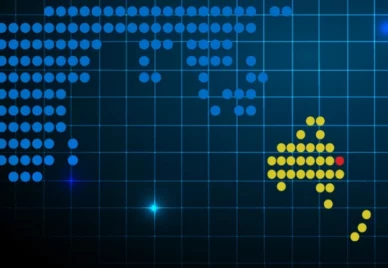
2024 eResearch Australasia Conference
Go to partner eventabout 2024 eResearch Australasia Conference
Australian researchers now have double the amount of national cloud computing power for research analysis and data storage thanks to an $8 million upgrade of the Australian Research Data Commons (ARDC) Nectar Research Cloud.
The ARDC Nectar Research Cloud (Nectar) upgrade was completed this month with the final 2 nodes, QCIF and Intersect, coming online with more than 10,000 virtual central processing units (vCPUs), 500 TB of volume storage and 230 TB of object storage.
The Nectar nodes The University of Melbourne, Monash University and The Tasmanian Partnership for Advanced Computing (TPAC) completed their upgrades in the past 12 months. This completes the ARDC investment of $4.1 million in the cloud infrastructure upgrade for Australian researchers, with matching co-investment from partner organisations.
Thousands more Australian researchers will now be able to access Nectar to store, access and analyse data quickly and from anywhere. Nectar currently provides computing infrastructure and supporting core services to over 3,000 active users for over 1,780 projects. Services hosted on Nectar are used by more than 50,000 researchers.
Australian researchers can try Nectar via a free project trial for 6 months. Allocation on Nectar is then available to those conducting research of national merit in Australia at no cost.
Carmel Walsh, ARDC Director for eResearch Infrastructure and Services, said: “We’re pleased to have supported the complete refresh of the ARDC Nectar Research Cloud, which has doubled the capacity of of the research cloud for national allocation, supporting 38,000 vCPUs and 6 PetaBytes of data storage. This ensures that as Australia’s National Research Cloud, Nectar will be able to meet the ever-increasing demand for research computing as well as ongoing support for our projects and platforms.”
On top of doubling the capacity of Nectar, additional infrastructure was funded by the ARDC to support ARDC Research Platforms. The ARDC is supporting the development of 26 research platforms; online platforms that draw together research data, models, analysis tools and workflows to support collaborative research. Some of the research platforms that will be supported by the new infrastructure include:
These research platforms will benefit from high-end graphic processing units (GPUs) and large memory servers, deployed by the University of Melbourne, Monash University and QCIF through this additional infrastructure support. QCIF is currently deploying its tranche of computational infrastructure to support the research platforms, which also includes an extra 500 vCPUs and almost 500 TB of volume storage, and Monash University will deploy its tranche in September. The new large memory servers at the University of Melbourne are being used by Galaxy Australia to support additional genomics tools and workflows that require very large memory, such as genome assembly.
QCIF CEO John Bancroft said: “ARDC’s strategic funding of $1M in support of our partnership with Intersect and $945K for the ARDC Research platforms sees a tripling of QCIF’s Nectar Node (called QRIScloud) capacity and a complete refresh of Intersect’s capacity, now hosted in Queensland alongside QRIScloud. The new infrastructure, which brings together technologies from Lenovo, IBM and Mellanox, provides enhanced capabilities in support of our members’ researchers and research communities, with faster CPUs, computational storage and networks, coupled with specialised capabilities such as large memory and GPU nodes.”
Intersect CEO Satish Nair said: “The Nectar upgrade and Intersect’s partnership with QCIF means increased scalability and efficiency, which benefits our research community. High memory virtual machines and the introduction of new huge flavours means we can now service more researcher needs than ever before.”
Dr Adam Morris, Research Fellow in Monash University’s Data Science and AI Platform and Project Manager of Environments to Accelerate Machine Learning Based Discovery said: “This investment will allow researchers across the nation to build more sophisticated AI models and algorithms, test new ideas, and ultimately generate benefits to broader society, faster than ever before.”
Dr Edan Scriven, Australian Characterisation Commons at Scale DevOps Engineer and University of Queensland QRIScloud Operations Engineer, said: “This new infrastructure gives the Queensland Characterisation Virtual Laboratory (CVL) presence significant resource upgrades, especially for the more recent GPUs and increased memory capacity per desktop session. This also means an expansion of CVL’s availability to more Queensland universities.”
Learn more about how Australian researchers can use the ARDC Nectar Research Cloud.
The ARDC is funded through the National Collaborative Research Infrastructure Strategy (NCRIS) to support national digital research infrastructure for Australian researchers.